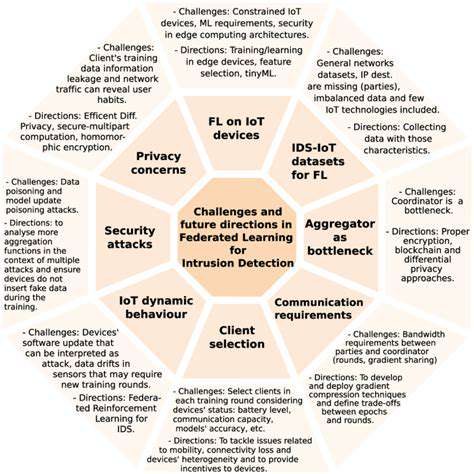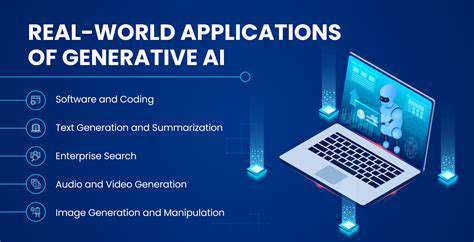The Growing Importance of Data Localization

Data Localization and Compliance
Data localization, the practice of storing data within a specific geographic region, has become a critical consideration for modern businesses. Governments worldwide are implementing strict policies requiring companies to keep certain types of information within national borders. Failure to comply with these regulations can result in severe financial penalties and damage to corporate reputation. Different jurisdictions have unique requirements, making it essential for organizations to thoroughly understand the legal landscape in each market they operate.
When developing IT infrastructure, enterprises must carefully evaluate their data storage solutions. This involves assessing various cloud service providers and their regional capabilities. Selecting appropriate data management approaches helps minimize regulatory risks while maintaining operational efficiency. Many organizations now employ specialized compliance teams to navigate these complex requirements.
Global Market Expansion and Data Accessibility
International business operations frequently encounter data access challenges due to localization policies. Information stored in one country may become difficult to retrieve from another location, potentially disrupting workflows. Strategic data placement can help resolve these issues by ensuring information remains accessible across different markets.
Well-planned data distribution strategies are crucial for maintaining seamless international operations and preventing service interruptions. Additionally, such approaches can enhance customer satisfaction by reducing latency in data retrieval and service delivery.
Security and Data Protection
Localized data storage offers significant security advantages by limiting exposure to potential breaches. When information remains within defined geographical boundaries, organizations gain greater control over access protocols. This containment strategy allows for more effective implementation of region-specific security measures and faster response to potential incidents.
Properly executed data localization measures can substantially strengthen an organization's overall security framework. This increased protection often leads to stronger relationships with customers and business partners who value data privacy.
Cost Implications and Infrastructure Considerations
Establishing localized data storage solutions requires substantial initial investment. Companies must account for expenses related to infrastructure development, additional storage capacity, and potential new facilities. A thorough cost-benefit analysis is essential to ensure alignment with broader business objectives.
Managing multiple regional data centers introduces complexity in backup procedures, disaster recovery planning, and maintaining consistent performance across locations.
Technological Advancements and Solutions
Emerging technologies are transforming data localization approaches. Cloud service providers now offer region-specific storage options that combine compliance with flexibility. These solutions allow businesses to meet regulatory requirements while benefiting from scalable cloud infrastructure.
Innovative technologies are enabling more efficient and cost-effective data localization implementations. Organizations can leverage these developments to optimize their information management systems without sacrificing performance.
Future Trends and Emerging Challenges
The data localization landscape continues to evolve alongside changing regulations and business needs. The increasing complexity of global data governance requires ongoing adaptation of corporate strategies. Companies must remain vigilant about emerging trends to maintain compliance and operational effectiveness.
Proactive adaptation to these changes will be essential for maintaining competitive advantage in global markets.
Decentralizing Data Processing with Edge Computing

Decentralized Data Storage
Decentralized storage systems eliminate dependence on single points of control by distributing information across multiple nodes. This architecture provides greater resilience against data loss, censorship attempts, and system failures. The distributed model creates a more secure and reliable framework for information management. Data replication across the network ensures continuous availability even if individual components fail.
Enhanced Data Security
Decentralized architectures significantly improve information security. The distributed nature of these systems makes large-scale compromise substantially more difficult. Multiple layers of encryption and authentication protect data integrity throughout the network. Traditional centralized systems remain vulnerable to single-point failures that can expose large datasets.
Improved Data Privacy
Modern privacy concerns are effectively addressed through decentralized processing. Advanced cryptographic methods restrict access to authorized users only, providing greater control over personal information. These privacy-preserving techniques help build confidence in digital systems.
Increased Data Transparency
Decentralized systems offer superior transparency benefits. With information distributed across multiple verification points, validating data authenticity becomes more straightforward. This transparency enables users to verify information accuracy and promotes system accountability.
Scalability and Efficiency
Decentralized networks demonstrate superior scaling characteristics. As participant numbers grow, available processing power and storage capacity increase correspondingly. This organic growth pattern supports efficient handling of expanding data volumes.
Reduced Dependence on Central Authorities
A key advantage of decentralization is minimizing reliance on centralized control points. This approach prevents potential biases or censorship from single entities, creating more equitable information management systems. Users gain greater autonomy over their personal data usage.
Cost-Effectiveness and Accessibility
Decentralized models often prove more economical than traditional approaches. Eliminating central infrastructure requirements reduces operational expenses. These systems also improve accessibility by removing geographical restrictions on data availability.
Enhanced Data Privacy and Compliance
Data Minimization and Purpose Limitation
Implementing strict data minimization policies represents a fundamental privacy protection measure. Organizations should collect only essential information for defined purposes, reducing potential misuse risks. This principle aligns with major data protection frameworks like GDPR. Clear definition of data use cases ensures appropriate information collection and processing.
Purpose limitation compliance requires strict adherence to original collection objectives. Any deviation from authorized uses demands explicit consent or legal justification. This approach protects user rights while helping organizations avoid legal complications.
Secure Data Storage and Transmission
Edge computing implementations require robust security protocols. Comprehensive encryption for both stored and transmitted data forms the foundation of protection. Multi-factor authentication for device and system access provides additional security layers.
Data Subject Rights and Access
Users must maintain control over their personal information. Systems should provide straightforward mechanisms for data access, correction, and deletion requests. Transparent information practices build trust and facilitate effective data management.
Auditing and Monitoring Data Activities
Comprehensive monitoring of edge computing activities ensures compliance and security. Detailed logging of all data operations enables rapid identification of potential issues. Regular system audits help maintain robust security postures.
Optimizing Latency and Performance with Edge Computing
Understanding the Need for Edge Computing
Edge computing relocates processing closer to data sources, significantly reducing response times. This proximity advantage proves particularly valuable for real-time applications. The distributed architecture also improves system resilience against network issues.
Autonomous vehicles demonstrate this principle effectively. Local processing of sensor data enables faster decision-making than cloud-based alternatives, enhancing safety and performance.
Reducing Latency for Real-Time Applications
Edge computing dramatically decreases processing delays critical for time-sensitive operations. Applications like industrial automation and telemedicine benefit substantially from these improvements.
Improving Data Security and Privacy
Localized processing reduces data transmission across networks, minimizing exposure to potential threats. Targeted security measures can be implemented based on specific regional requirements.
Enabling Scalability and Flexibility
Edge architectures support flexible expansion to accommodate growing demands. Additional capacity can be deployed without overburdening central infrastructure.
Optimizing Resource Utilization and Cost
Reduced bandwidth requirements translate to significant cost savings. Edge solutions also enable data processing in areas with limited connectivity.
Enhanced Data Analytics and Insights
Local processing enables immediate data analysis, supporting rapid decision-making. Predictive capabilities can be developed using real-time information streams.
Addressing Bandwidth Constraints and Network Reliability
Edge computing alleviates network congestion by processing data locally. This approach maintains system functionality during connectivity interruptions.
Future Trends and Challenges in Edge Computing for Data Sovereignty
Emerging Data Sovereignty Concerns
Edge computing introduces complex data sovereignty considerations. Organizations must navigate varying regional requirements while maintaining operational effectiveness. Comprehensive data governance frameworks become essential for compliance.
Technical Advancements and Infrastructure Considerations
Ongoing technological improvements continue to enhance edge computing capabilities. However, widespread deployment presents significant implementation challenges that require careful planning.



